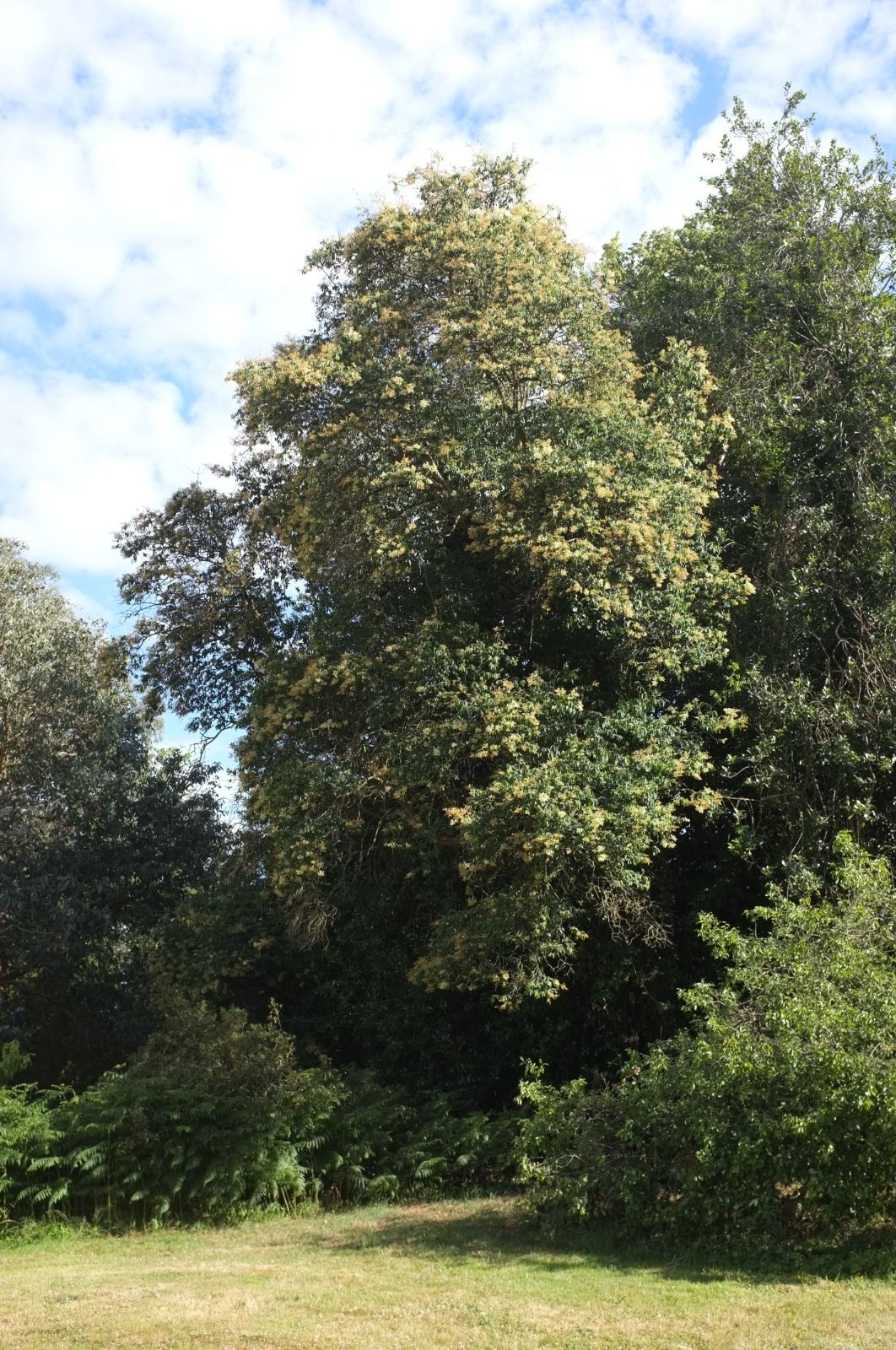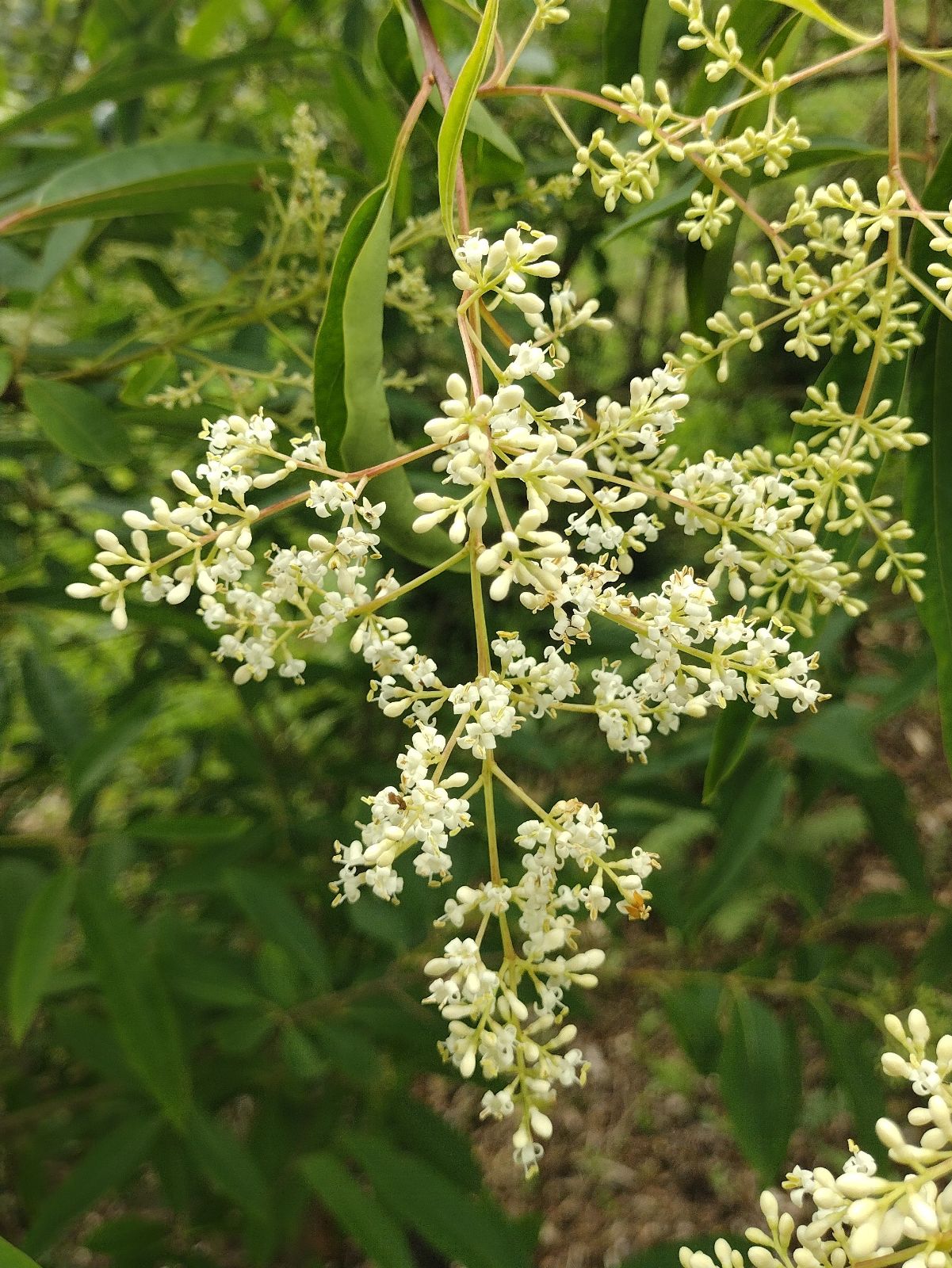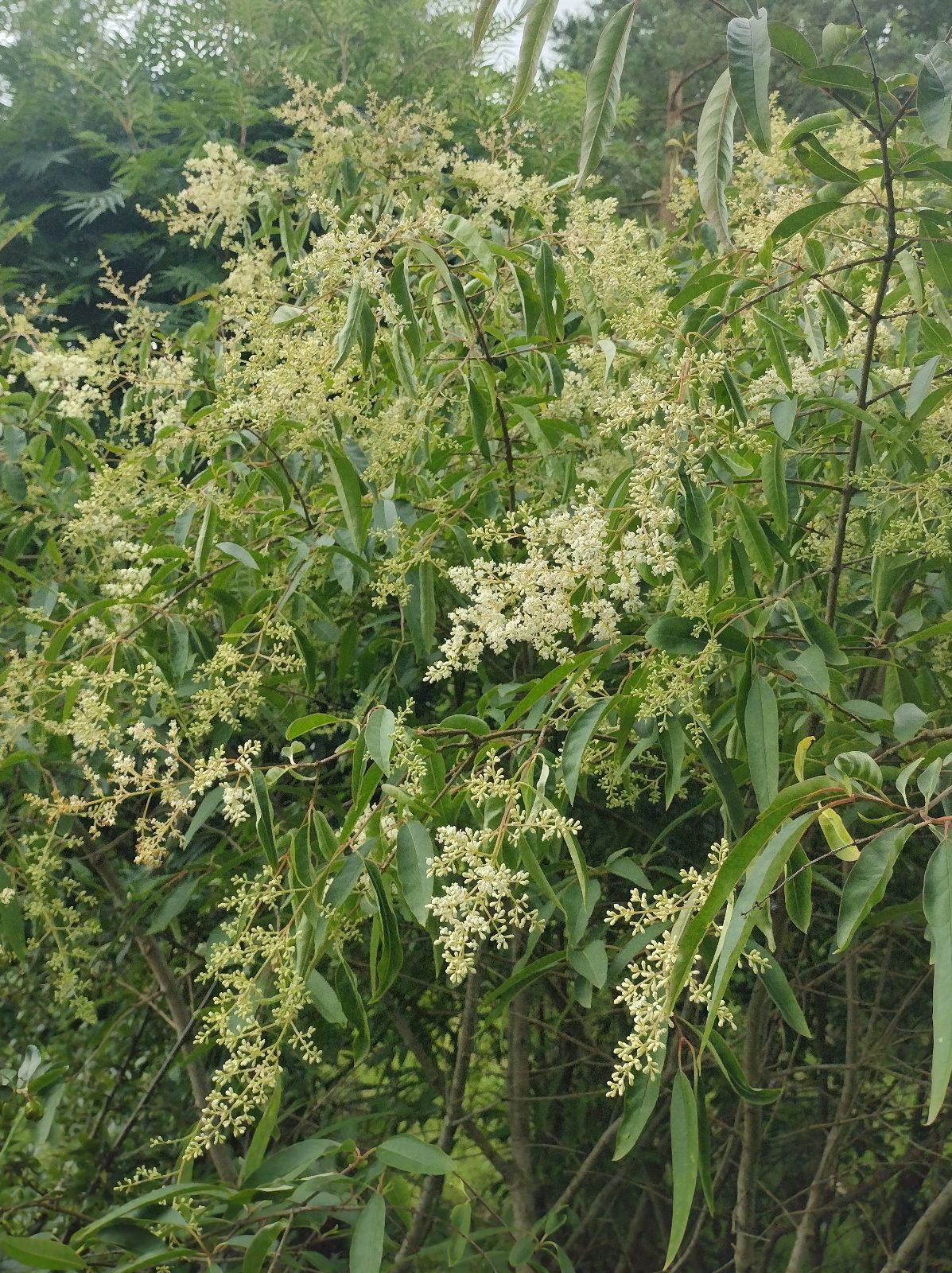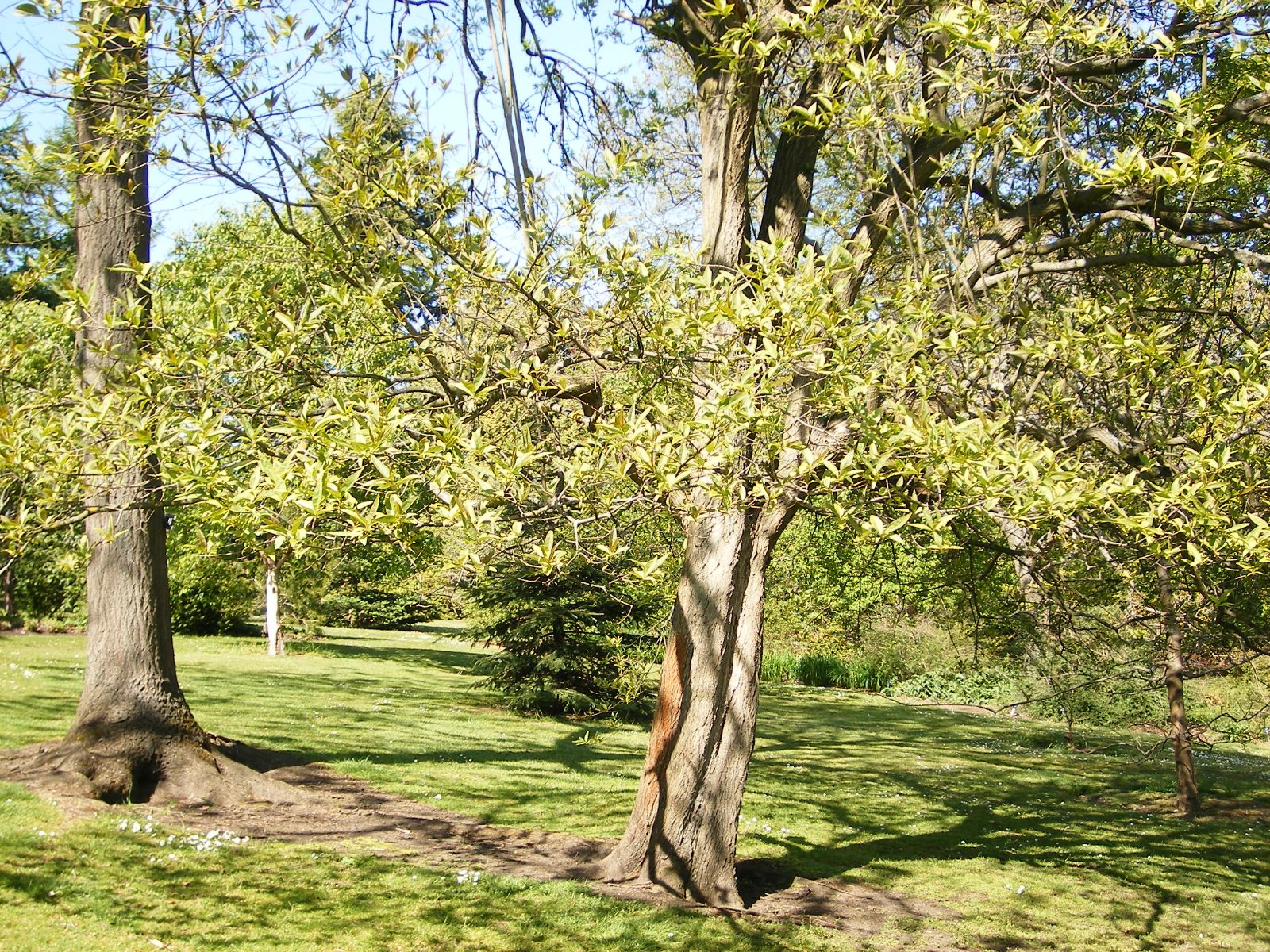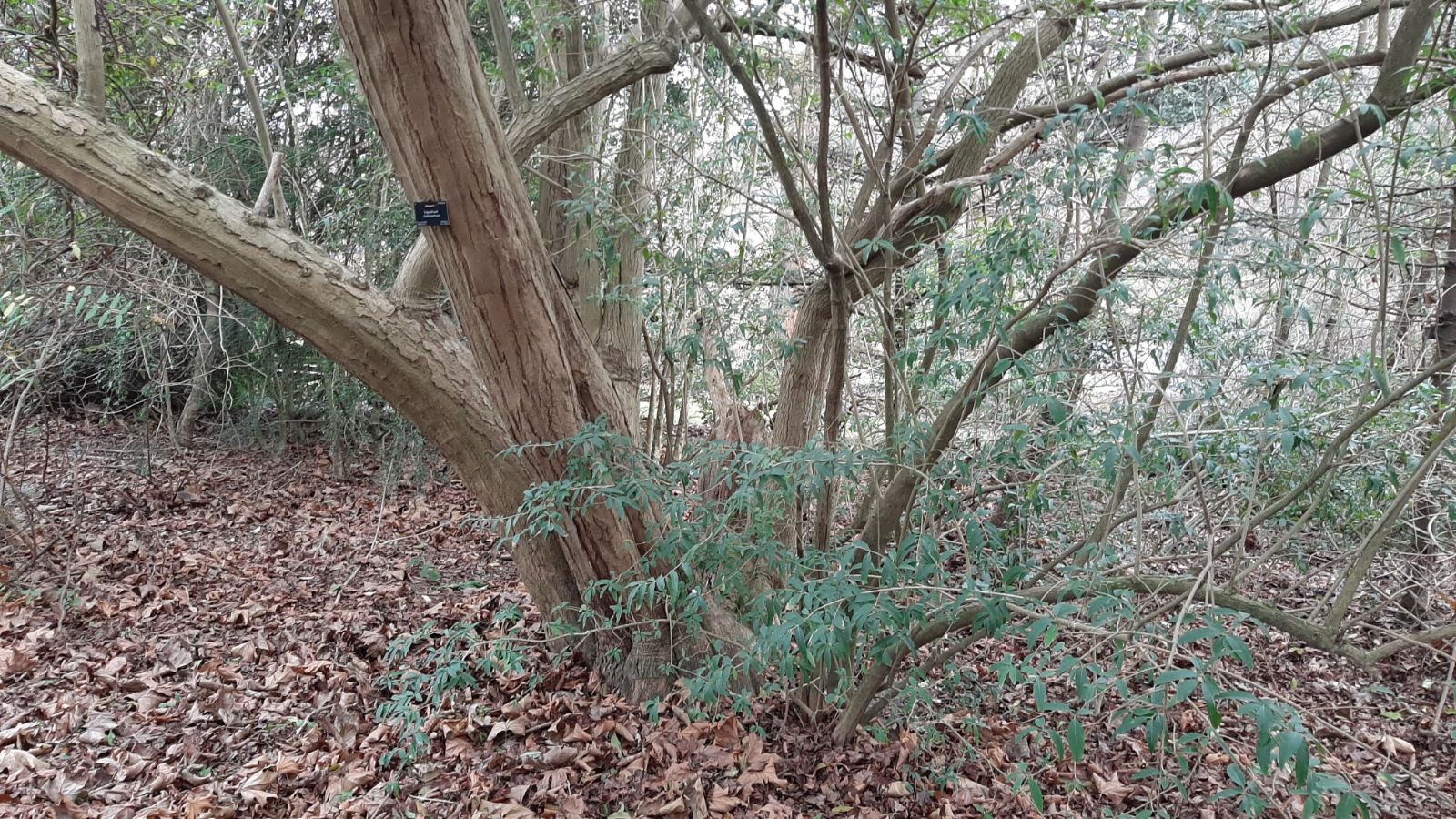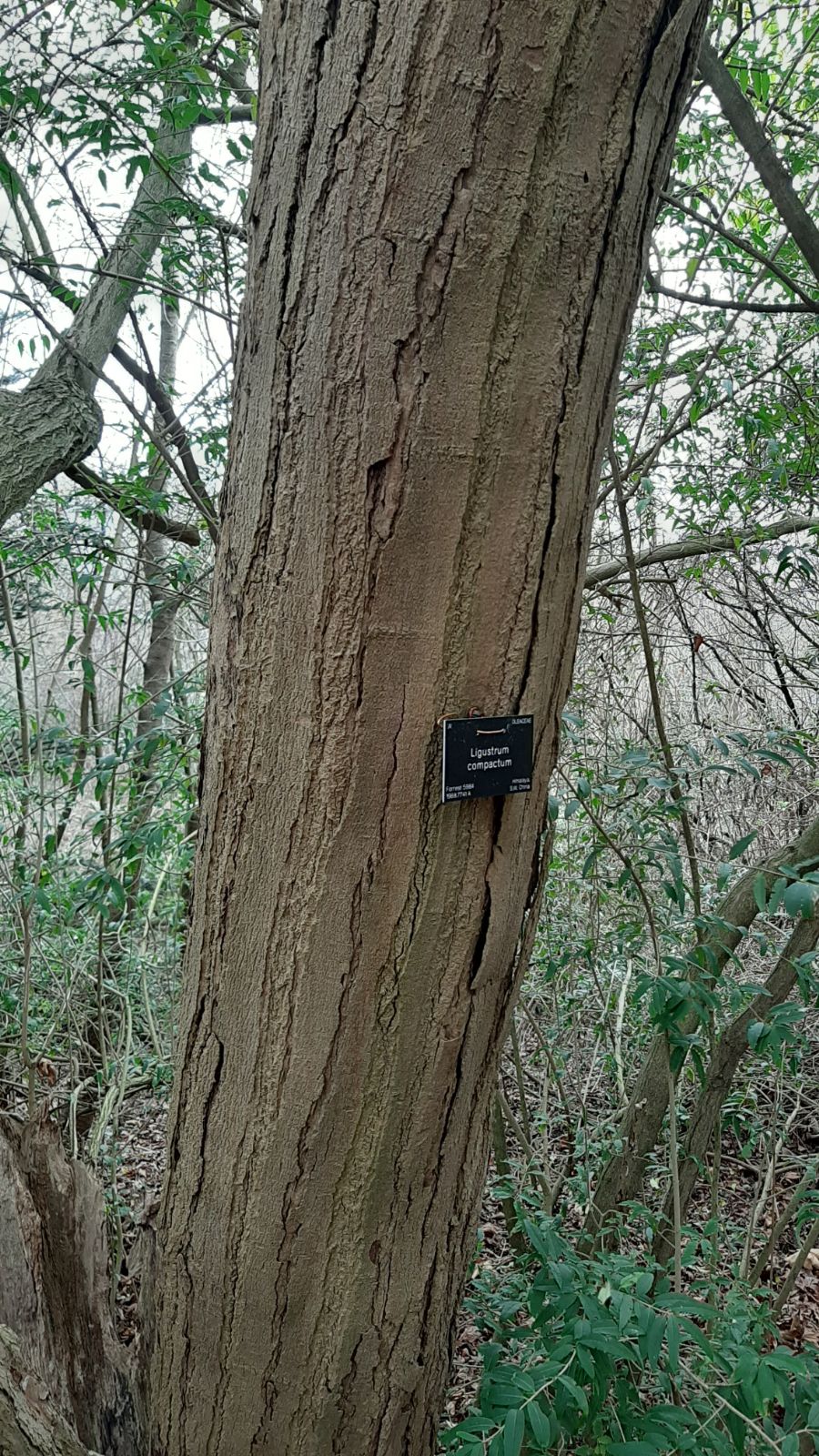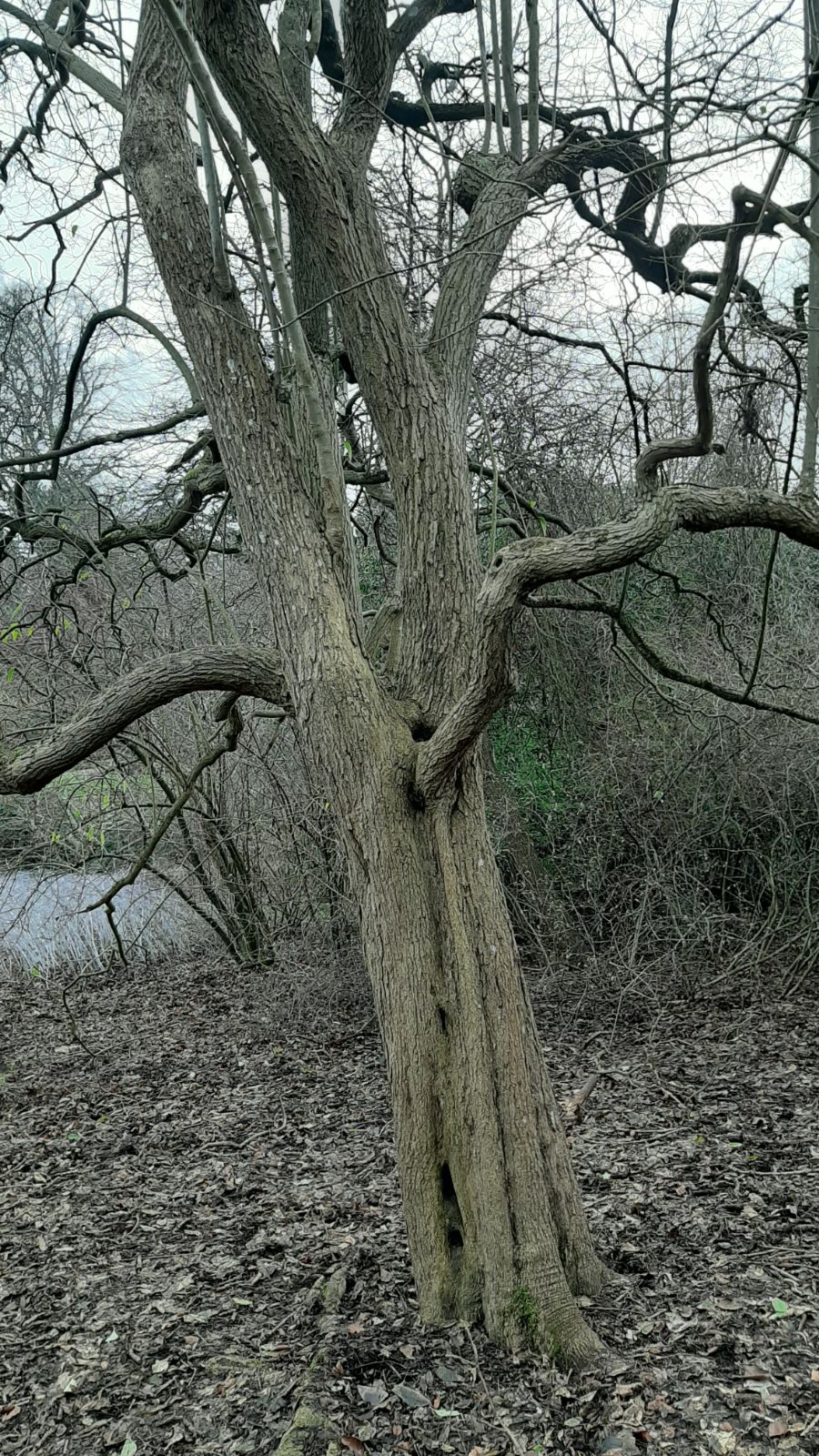Ligustrum compactum
Credits
Article from Bean's Trees and Shrubs Hardy in the British Isles
Recommended citation
'Ligustrum compactum' from the website Trees and Shrubs Online (treesandshrubsonline.
Genus
Synonyms
- L. yunnanense L. Henry
A deciduous, sometimes partially evergreen shrub 10 to 15 ft high, of open, vigorous habit; branches spreading or somewhat pendent, slightly warted, and at first clothed with a very minute down, which mostly falls away by the end of the year. Leaves oval lance-shaped, tapering at both ends, 3 to 6 in. long, about one-third as wide; glabrous. Flowers creamy white with an odour like common privet, produced in July in numerous terminal panicles 6 or 7 in. high, and the same or more wide at the base. Fruits 1⁄4 to 3⁄8 in. long, rounded at the top, covered with purple bloom at first, then black.
Native of the N.W. Himalaya and of Yunnan, China; introduced from the Himalaya in 1874. Plants raised at Paris from seeds sent by the Abbé Delavay in 1888 were named L. yunnanense but later proved to be conspecific with L. compactum. In its general aspect it is very like L. lucidum ‘Alivonii’ but it flowers before that privet does, and regularly sets its fruit. It is also nearly deciduous.
L. chenaultii Hickel – Raised in France from seeds sent from Yunnan by Ducloux in 1908, this privet is very close to L. compactum and doubtfully distinct as a species. It is said to differ by its acute winter-buds and by its leaves which, although of the same shape, may be up to 10 in. long.
From the Supplement (Vol. V)
† var. velutinum P. Green – Young stems, leaves and inflorescence-branches clad with a velvety pubescence. Bot. Mag., n.s., t.759. The type of this variety was raised at Highdown in Sussex from seeds collected by Kingdon Ward in the region of the Tsangpo Bend, south-east Tibet, in 1924 (KW 6390). It was portrayed for the Botanical Magazine when it flowered at Highdown in 1930 but, the identity of the plant being uncertain, it was not published until 1978, when it was named as a variety of L. compactum in the accompanying article. The Highdown plant is believed no longer to exist, but examples may exist in other gardens, raised from the Kingdon Ward introduction.

